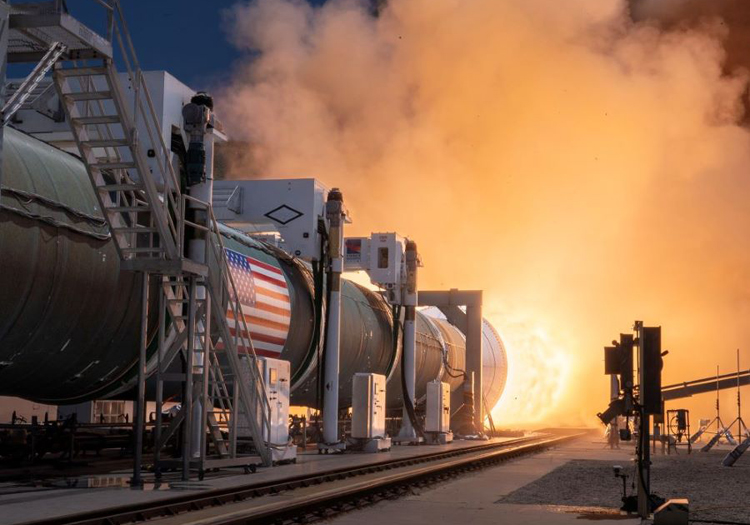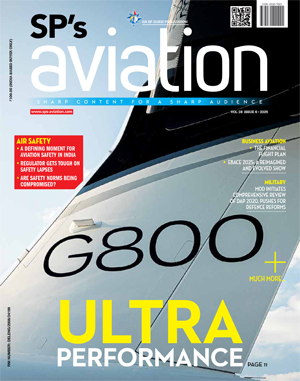INDIAN ARMED FORCES CHIEFS ON OUR RELENTLESS AND FOCUSED PUBLISHING EFFORTS

The insightful articles, inspiring narrations and analytical perspectives presented by the Editorial Team, establish an alluring connect with the reader. My compliments and best wishes to SP Guide Publications.

"Over the past 60 years, the growth of SP Guide Publications has mirrored the rising stature of Indian Navy. Its well-researched and informative magazines on Defence and Aerospace sector have served to shape an educated opinion of our military personnel, policy makers and the public alike. I wish SP's Publication team continued success, fair winds and following seas in all future endeavour!"

Since, its inception in 1964, SP Guide Publications has consistently demonstrated commitment to high-quality journalism in the aerospace and defence sectors, earning a well-deserved reputation as Asia's largest media house in this domain. I wish SP Guide Publications continued success in its pursuit of excellence.
- Prime Minister Modi Visits Punjab’s Adampur Air Base, Interacts with Airmen after Successful ‘Operation Sindoor’; Stern Message to Pakistan
- The layered Air Defence systems that worked superbly, the key element of Operation Sindoor
- Operation Sindoor | Day 2 DGMOs Briefing
- Operation Sindoor: Resolute yet Restrained
- India's Operation Sindoor Sends a Clear Message to Terror and the World – ‘ZERO TOLERANCE’
- Japan and India set forth a defence cooperation consultancy framework, talks on tank and jet engines
Northrop Grumman Tests Most Powerful Segmented Solid Rocket Booster Ever Built

Northrop Grumman Corporation conducted a full-scale static fire of NASA's Booster Obsolescence and Life Extension (BOLE) solid rocket booster. This was the first demonstration test of the enhanced five-segment solid rocket motor, the world's largest and most powerful segmented solid rocket motor built for human spaceflight.
- Over 700 data channels assessed the 156-foot-long solid rocket motor as it fired for just over two minutes, producing more than 4 million pounds of thrust from a single booster.
- Leveraging Northrop Grumman's industry-leading experience in solid rocket motor manufacturing, BOLE improves on previous designs by replacing key components no longer in production. The booster features a composite case design, updated propellant formulation and advanced components to increase booster performance by more than 10 percent compared with the current five-segment Space Launch System (SLS) booster design.
- The carbon fiber composite case enables better booster performance, faster manufacturing, and aligns with commercial standards by providing commonality among our infrastructure, supply chain, and manufacturing operations. Other aspects of the BOLE design, including metallic components, allows the company to support a U.S.-based supply chain of American manufacturers.
- Compared with its predecessor, this evolved booster provides another five metric tons of payload to lunar orbit, a capability critical to supporting deep space missions.
Expert:
Jim Kalberer, vice president, propulsion systems, Northrop Grumman: "Today's test pushed the boundaries of large solid rocket motor design to meet rigorous performance requirements. While the motor appeared to perform well through a harsh burn environment, we observed an anomaly near the end of the two-plus minute burn. As a new design, and the largest segmented solid rocket booster ever built, this test provides us with valuable data to iterate our design for future developments.
Details:
Northrop Grumman supplied rocket propulsion for NASA's Apollo and Space Shuttle Programs and developed the five-segment SLS solid rocket booster based on the flight-proven design of the space shuttle boosters. The five-segment booster, BOLE's predecessor, generates 25 percent more power than its space shuttle predecessor, and provided over 75 percent of the SLS rocket's initial thrust during the Artemis I mission on November 15, 2022.
The BOLE booster development, awarded in 2017, represents a significant step towards more sustainable commercial practices and incorporates commonality in design and construction standards from across all of Northrop Grumman's production programs.





